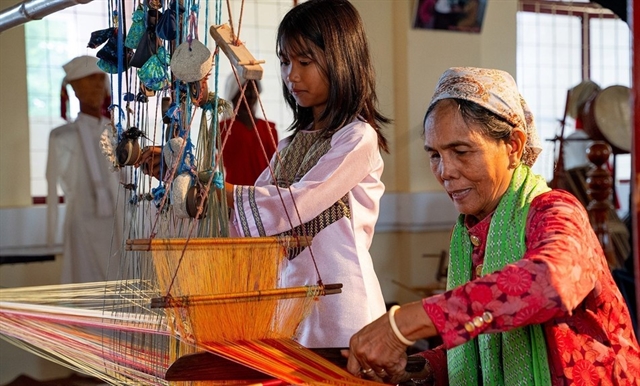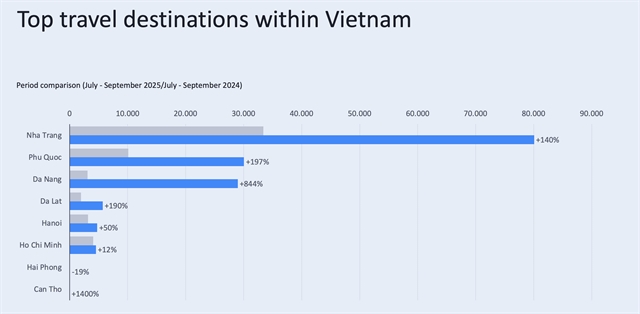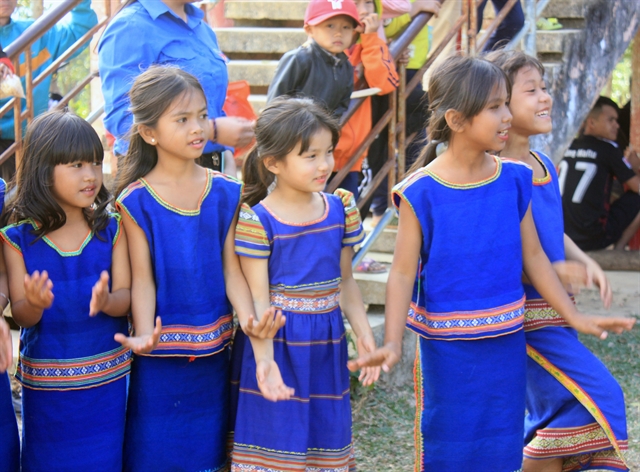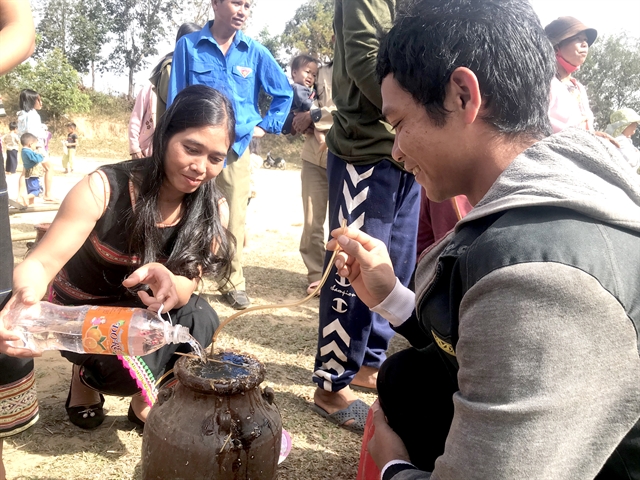 Features
Features

Every year, after the harvest is completed or around the end of the Lunar New Year, the Rơ Ngao ethnic minority in the Central Highlands province of Kon Tum’s Đăk Hà District celebrate a festival called Nước Giọt (Water Drops).

|
| SHARED JOY: Children in traditional costumes get ready to dance. VNA/VNS Photo Khoa Chương |
Khoa Chương
Every year, after the harvest is completed or around the end of the Lunar New Year, the Rơ Ngao ethnic minority in the Central Highlands province of Kon Tum’s Đăk Hà District celebrate a festival called Nước Giọt (Water Drops).
It features a worshipping ceremony to pay tribute to the God of Water, who is locally known as Yàng Ia, for his support during farming.
The ceremony is also held to pray to him for good things to happen, including a bumper harvest in the new year.
Their belief is that the God provides the Rơ Ngao with their main source of water for crops and brings good health and peace to villagers, so that they never overuse or waste the local water supply in farming and daily life.

|
| GOOD TIMES: Villagers drinking local wine at the festival. VNA/VNS Photo Khoa Chương |
Instead of digging wells, the villagers find geysers in the mountains and use hollowed-out tree trunks to convey water to where it’s needed. These water supply points are called "water drops" by the Rơ Ngao and this has become the name of the festival, which is equivalent to the Lunar New Year festival, celebrated around Việt Nam.
To prepare, A Thui, the village patriarch, determines an auspicious day and notifies all to contribute offerings to the worshipping ceremony, of which main items are pigs, chickens, sticky rice, and wine.
The patriarch assigns young people to go into the forest to cut down a big bamboo and bring home to make a kind of totem pole decorated with artificial flowers and other colourful items. The pole is erected near the village water station.
The Rơ Ngao people believe the pole is God’s spirit shelter and a symbol of the solidarity in the community.
The more splendid the pole is decorated, the more favourable and lush the crops will be. It must be perfect, and whole.
No one is allowed to immerse the pole in water or step over it while it is still being decorated.
Young men are assigned to clear the weeds and the path leading to the water supply points. Meanwhile, women focus on cleaning up, redecorating the communal house, and preparing food, wine, and containers to store water.

|
| ESSENTIALS: Wine and food are among the key items at the festival. VNA/VNS Photo Khoa Chương |
When everything is ready, village patriarch A Thui, dressed in brocade, stands at the front of the water supply point and begins worshipping, inviting the God of Water to join in and enjoy the ceremony along with the villagers.
At the end, the patriarch uses a bucket to take water. After filling it up, the villagers use a little water to fill a pot of wine. Elderly villagers are the first to enjoy the drops of pure water.
Next, villagers collect water together and bring it home, preparing for the upcoming festive season at the communal house.
All feel a sense of excitement and joy, as they believe the God of Water will bring them all the pure water they need together with good health and bumper crops.
A Thui said that the festival is now better than before.
Villagers have ended some of the backward customs associated with the festival, including cutting the neck of a chicken and spreading its blood around the place of worship.
“This not only pollutes the water source from the mountains but also arouses superstitions that are not allowed in the community,” the village chief said.
Another evil custom, the animal sacrifice, has also been rejected by the community.
“In the past, when worshipping Yàng [the Deity], people would tie a sacrificial animal, usually a buffalo or a cow, to the totem pole in front of the communal house,” A Thui explained.
“After saying some words of worship, the village patriarch would use a long spear to stab the animal once, to cast a spell. Young people would take turns stabbing the animal until it was dead.”
He said he had convinced the villagers to stop such backward and violent customs.
“Instead, I told them to focus more on cleaning the worshipping area to welcome the God of Water, which is a symbol of a healthy and happy life, for a bumper crop,” he said.
An elder in Kon Trang Long Loi Village, A Nớt, said he used to participate in the animal sacrifice ritual when he was young. But he realised the custom was not humane so was willing to end it.
“I support patriarch A Thui and local authorities in the campaign to remove these evil customs from the community,” he said. “The villagers agreed immediately with the decision of local authorities to end it.”
After the rituals at the water supply point are cultural activities at the communal house.
The throbbing sounds of gongs resound throughout the village. The patriarch walks around the communal house with gongs and dances to thank the God of Water for helping the villagers have a bountiful harvest. Everyone also prays to God for a happy and successful new year.
The villagers gather around the communal house, presenting all kinds of food, including stir-fried bamboo shoots, grilled meat, fried noodles, and, especially, wine.
Hundreds of eye-catching decorative wine vases are presented in front of the communal house by people to thank the God for giving the village valuable water.
To joyful rhythmic sounds, all of the villagers, old and young, enjoy drinking, singing, and dancing. VNS